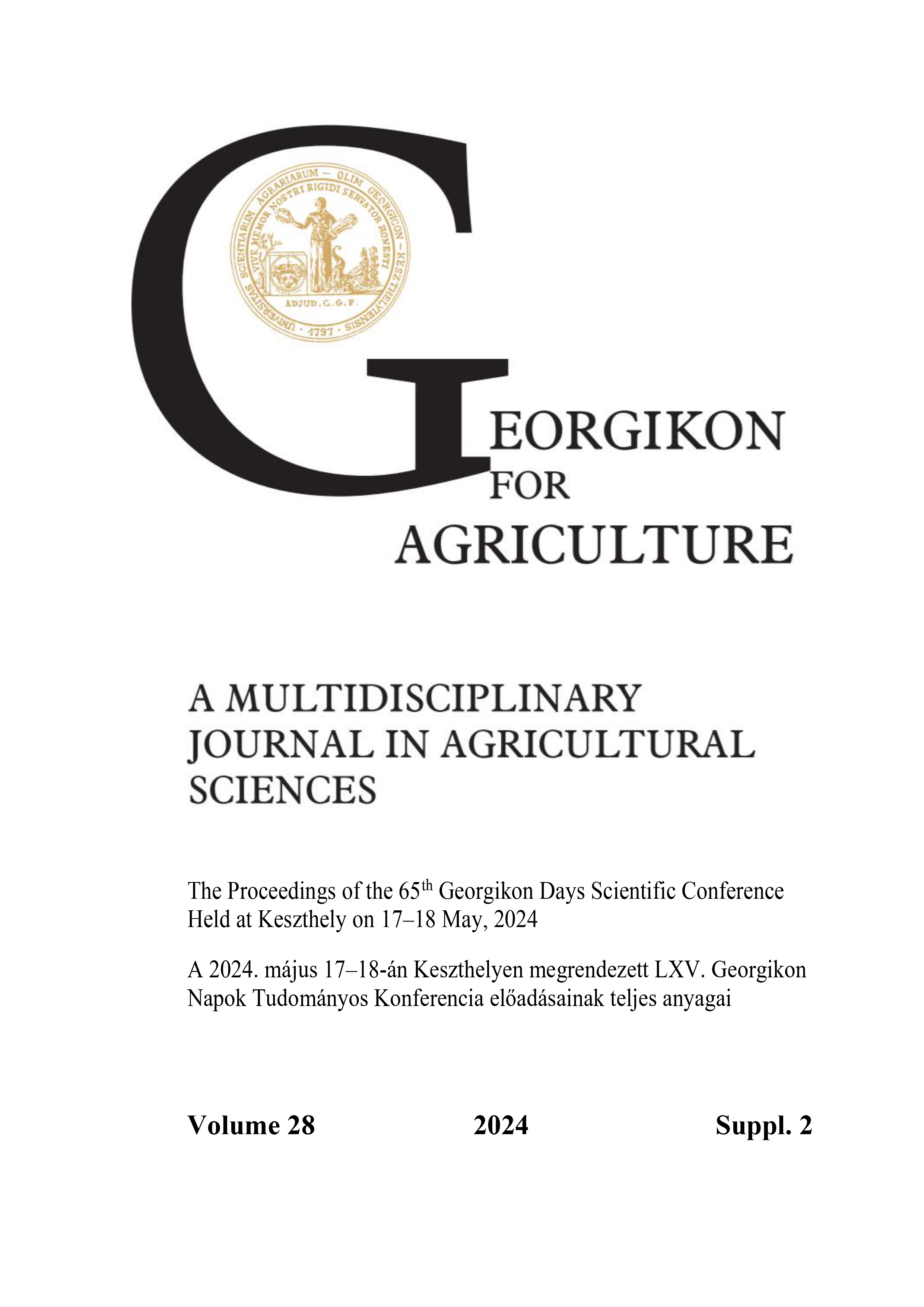Senescence Induction on the Host Plants of Sap Sucking Insects
Keywords:
aggregation, Ischnodemus sabuleti, Glyceria spp., plant abiotic and biotic stress, plant nutrient contentAbstract
In this paper the topic of the insect induced and abiotic stress induced host plant senescence is briefly discussed and the outlines of an ongoing research on the Glyceria maxima – Ischnodemus sabuleti model system are presented. Some case studies indicate that the insect induced senescence of the host plant can improve the host plant quality for the insect itself. Aggregated occurrence of the senescence inducing insects on the individual host plants can seriously enhance their damaging effects, often leading to the local eradication of the host plant. The senescence induced by the insect aggregations can lead to intraspecific and/or interspecific facilitation trough host plant quality improvement. The senescence inducing abiotic stress factors including drought and nutrient deficiency can also influence the preference and performance of the sap-sucking insects. Some current hypotheses on this topic are briefly discussed. The blissid bug species Ischnodemus sabuleti (Fallén 1826) is a phloem-feeder on the mannagrass species (Glyceria spp.) which shows aggregated spatial distribution and has a considerable senescence-inducing effect on the host plant. We investigate whether the physiological state and nutrient content of the host plant, related to the water and nutrient supply influence the preference/performance of I. sabuleti, and the effect of the mass occurrence and feeding of the I. sabuleti on the host plant.
References
Cao, H. H., Liu, H. R., Zhang, Z. F. and Liu, T. X. 2016. The green peach aphid Myzus persicae perform better on pre-infested Chinese cabbage Brassica pekinensis by enhancing host plant nutritional quality. Scientific Reports. 6. 21954. https://doi.org/10.1038/srep21954
Gely, C., Laurance, S. G. W. and Stork, N. E. 2020. How do herbivorous insects respond to drought stress in trees? Biological Reviews. 95. 434-448. https://doi.org/10.1111/brv.12571
Gidó, Zs. and Lehoczky, É. 2023. Intraspecific Facilitation Through Host Plant Quality Improvement? Observations on the Aggregation Behaviour and Population Biology of the Senescence Inducing Phloem Feeder (Ischnodemus Sabuleti). Journal of Central European Green Innovation. 11. 50-69. https://doi.org/10.33038/jcegi.4529
Sandström, J., Telang, A. and Moran, N. A. 2000. Nutritional enhancement of host plants by aphids – a comparison of three aphid species on grasses. Journal of Insect Physiology. 46. 33–40. https://doi.org/10.1016/S0022-1910(99)00098-0
Srinivasan, T. S., Almazan, M. L. P., Bernal, C. C. and Ramal, A. F. 2016. Interactions between nymphs of Nilaparvata lugens and Sogatella furcifera (Hemiptera: Delphacidae) on resistant and susceptible rice varieties. Applied Entomology and Zoology. 51. 81–90. https://doi.org/10.1007/s13355-015-0373-4
Steinbauer, M. J., Burns, A. E., Hall, A., Riegler, M. and Taylor, G. S. 2014. Nutritional enhancement of leaves by a psyllid through senescence-like processes: insect manipulation or plant defence? Oecologia. 176, 1061–1074. https://doi.org/10.1007/s00442-014-3087-3
Telang, A., Sandström, J., Dyreson, E. and Moran, N. A. 1999. Feeding damage by Diuraphis noxia results in a nutritionally enhanced phloem diet. Entomologia Experimentalis et Applicata. 91. 403–412. https://doi.org/10.1046/j.1570-7458.1999.00508.x
White, T. C. R. 2015. Senescence-feeders: a new trophic sub-guild of insect herbivores. Journal of Applied Entomology. 139. 11–22. https://doi.org/10.1111/jen.12147
Downloads
Published
Issue
Section
License
Copyright (c) 2024 Zsolt Gidó, Éva Lehoczky

This work is licensed under a Creative Commons Attribution-NonCommercial-NoDerivatives 4.0 International License.
Cikkre a Creative Commons 4.0 standard licenc alábbi típusa vonatkozik: CC-BY-NC-ND-4.0. Ennek értelmében a mű szabadon másolható, terjeszthető, bemutatható és előadható, azonban nem használható fel kereskedelmi célokra (NC), továbbá nem módosítható és nem készíthető belőle átdolgozás, származékos mű (ND). A licenc alapján a szerző vagy a jogosult által meghatározott módon fel kell tüntetni a szerző nevét és a szerzői mű címét (BY).




